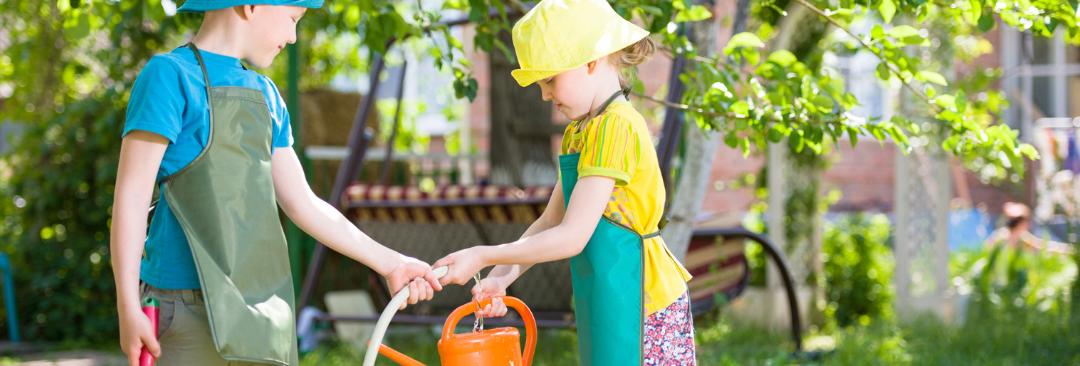Spending time in the garden, taking care of plants, and growing food can help kids learn new skills, have fun, play, and gain confidence.
The majority of children adore being outside, digging in the dirt, getting messy, making things, and seeing plants grow.
Introducing gardening into your school can therefore be beneficial. Stepping outside of the classroom into the fresh air can have a range of both mental and physical health benefits. Many topics, including math, science, health, literacy, and social studies, can incorporate a school garden.
Continue reading below to discover some of our tips when it comes to getting children gardening.
Age-appropriate Garden Activities
Toddlers, pre-schoolers, primary school pupils, and older children will approach the garden with different expectations and learn from it in different ways.
Younger kids will need close supervision while participating in activities. Planting seeds, gathering vegetables, and watering plants are appropriate responsibilities for younger children.
Older children have the physical strength to do a wider range of tasks, including digging, carrying, planting, mulching, and trimming.
Keep Children Engaged with Fun Gardening Activities
There are many inventive ways to make gardening tasks more enjoyable and exciting, including:
- Cultivating fascinating plants like strawberries, corn, tomatoes, pumpkins, and sunflowers
- Growing beans or sweet peas on a trellis or on a teepee
- Planting flowers that will draw birds, ladybirds, and other attractive insects like butterflies
- Building scarecrows
- Adding a sundial, a birdbath, or a water element to the area
- Creating a worm farm
Safety in the Garden
Although it’s important to make gardening fun, there are still many factors to consider to ensure everyone has a safe time:
- Choose a tool that is the right size
- Fertilizers and sprays should be out of reach
- Avoid chemical substances by growing organically if possible
- Equipment and tools should be stored securely
- During the summer, provide appropriate shade
- A hat, suncream, proper clothes, and boots should all be worn by kids when appropriate
Organise Your Harvest
Make a list of the various herbs, fruits, and vegetables you want to plant. Knowing each plant’s specific requirements can help you choose the right sort of soil, watering schedule, and amount of sunlight needed. Consider cultivating a range of plants that will complement your environmental conditions, your growing objectives, and the placement of your school garden. This can give you a head start when considering a place and which plants may be planted next to one another.
Social and Emotional Health Benefits
Self-development & Awareness
Students can celebrate the accomplishments of their hard work by harvesting the fruits and vegetables that they have worked so hard to cultivate. By recognising their ability to apply their abilities to accomplish their goals, students will build their self-efficacy and grow self-confidence. When they experience producing their food from seed to taste, they will get a sense of accountability for their health.
Making Smart Decisions
Vegetable cultivation calls for diligence, assessment, and introspection. In order to ensure that all of the plants in the garden thrive, students can work together to problem solve and examine viable solutions. Care and problem-solving skills can be taught with gardening projects to great effect.
Funding Your School Garden Project
You’ll need to consider how to raise money for your garden before you even start gathering your resources. A mix of community donations and volunteer work is typically used by schools to maintain their gardens after initially applying for grants to cover start-up costs.
Involve Your Community with Your School Garden Project
A school garden is a wonderful opportunity to incorporate the parents and families of your students in your wellness activities.
- Organise a planning committee of staff, teachers, students, parents, and community members who have an interest in or experience with gardening to involve parents and family members in the garden’s planning.
- Get the equipment you’ll need to maintain the garden from families by asking them to donate or lend tools.
- Send home information sheets to parents and families about the plants and vegetables you’re growing along with tips on how they can grow their own at home. Volunteers who are unable to visit the school in person will still feel included in the project.
If you are looking to renovate your school’s current space, then canopies are a great addition to any outdoor area. For any tips and advice needed for setting up a shelter for your gardening project, feel free to get in touch with our friendly team.

